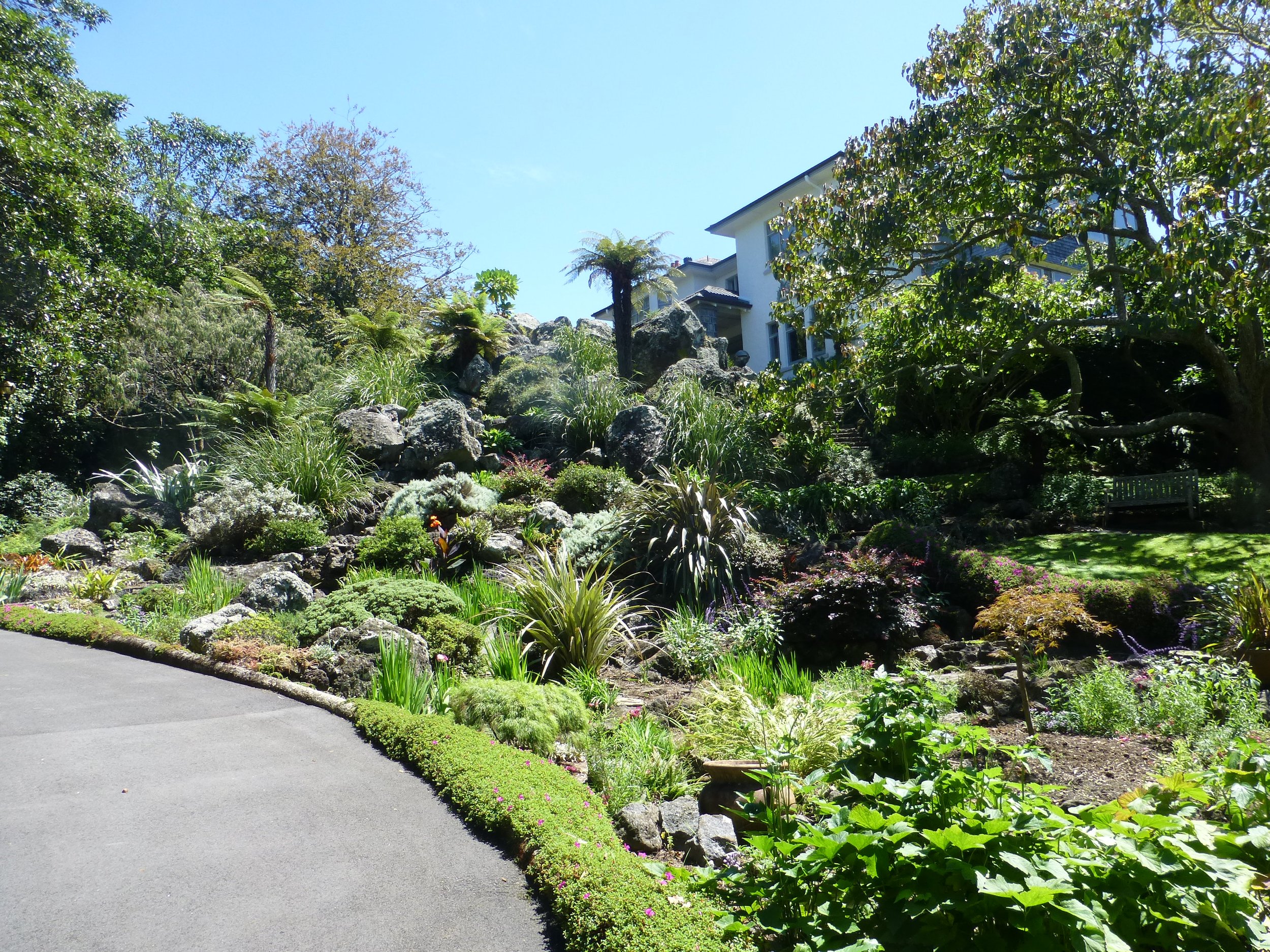Managing the Government House gardens
The garden management plan for Auckland’s Government House, by Jan Woodhouse from Woodhouse Associates, offers a new methodological framework for maintaining a large garden, with all changes landscape-led.
The plan highlights the historic importance of the grounds, noting their landmark status and provision of setting for a range of private and ceremonial functions. The site is part of New Zealand’s ceremonial and constitutional history, and its heritage value is significant.
The garden at Government House in Auckland.
“The grounds also have strong symbolic and commemorative value as a planted record of the original landowners and subsequent Vice Regal office holders,” says Jan. “They contain nationally significant historic exotic and native vegetation, both of which are distinctive character-defining elements.”
Government House is situated on the lower slopes of the volcanic cone of Mangawhau, with a gently sloping site featuring a house and contemporary pavilion addition in between two large lawns. Each lawn is wrapped by a band of tall trees and shrubs, and is used for entertaining and ceremonial purposes.
The garden management plan.
Detailed planting beneath the trees include smaller trees, shrubs, ground cover shrub, perennial borders and a rock garden.
The management plan sets the overall controls and policies that enable the sensible management of the gardens, and establishes a chain of approval for alterations within the garden.
One of the objectives of the plan was to, “recognise that the garden is rich in cultural and natural heritage and these elements combine with vegetation and landform to create a distinctive garden landscape that is a potentially important visitor attraction both for the tourism industry and for the local community and businesses and to recognise the potential to increase visitor numbers by sharing the garden and the stories about the garden.”
The site is part of New Zealand’s ceremonial and constitutional history.
The Lady Mappin Memorial Garden is one of the feature gardens - a tiny discrete private refuge surrounded by a hedge with detailed perennial and ground cover planting and an old ornamental pool. The space is peaceful and contemplative space in contrast with the scale of the Mappin Lawn and the grandeur of the house.”
Recommendations for the Lady Mappin Memorial Garden are typical of the plan. They include ensuring that coverage of groundcovers and perennials is at least 95% except in the winter months, and they also include a recommendation to upgrade the damaged water feature.
Other recommendations target the Rock forest bush by establishing a programme to target invasive weed species such as Bay, Tradescantia and Ivy, and replanting areas invaded by weeds in rock forest species. Historic walls and pathways in this area are also targeted for protection and repair.
The Lady Mappin memorial garden.
Commemorative trees are also targeted in the report which recommends they are from an approved list of species, they should be in agreed upon locations and a database of the historic, significant, commemorative and ceremonial trees in the grounds needs to be kept.
Climate change has also been considered as gardeners have reported plants appear to be struggling with heat and drought.
The garden has maintained its NZ Gardens Trust rating of five stars or national significance and is now managed in accordance with Jan’s plan.
“The plan ensures the ongoing effective sustainable management of natural and physical resources, has led to the conservation and enhancement of the site’s intrinsic landscape and ecological values, and supports and contributes to ecosystem services in the vicinity by limiting the role of the grounds management team management, visitors and Governor Generals (sic),” says Woodhouse.
“The project could contribute to the education of the profession by setting new benchmarks for best practice in the management of historic landscapes as it has been the precursor to similar projects.”
The site’s heritage value is significant to New Zealand.




